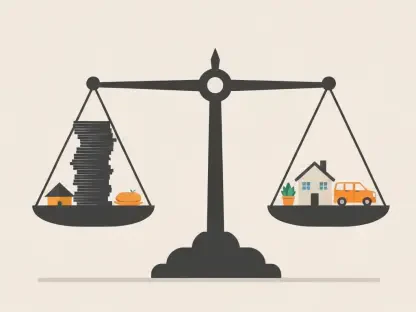The payments industry has been curious about the potential role of stablecoins in creating faster and cheaper transactions for years. Recently, with the advent of a new U.S. presidential administration that is open to digital currencies, those whispers of stablecoins’ benefits are turning into louder discussions. This analysis aims to provide industry professionals and others with a comprehensive understanding of the part these digital assets play in the payments sector and commerce. The idea of integrating stablecoins into payment systems has been met with both intrigue and skepticism. Proponents argue that these digital assets can provide a solution to some of the most pressing issues in the payments industry, such as high transaction fees and long settlement times. On the other hand, critics caution against the risks associated with the lack of regulation and stability concerns.
The Basics of Stablecoins
Stablecoins, a form of cryptocurrency designed to have a stable value by pegging them to traditional fiat currencies such as the U.S. dollar, were introduced in 2024. Notable examples include USDC, backed by Circle, and Tether, backed by iFinex. Despite their potential, large-scale adoption by payments companies has been slow, mainly due to their unregulated nature and the limited ability of merchants to accept them. The idea behind stablecoins is to combine the benefits of digital assets, like fast transactions and low fees, with the stability of fiat currencies. This pegging mechanism ensures that stablecoins do not experience the same volatility as other cryptocurrencies, such as bitcoin. This stability can make them an attractive option for various applications within the financial system, including everyday transactions and more complex payment processes.
By maintaining their value by pegging to traditional fiat currencies, stablecoins ensure they do not experience the same volatility as other cryptocurrencies like bitcoin. This stability can be beneficial for smoothing out complex and expensive payment processes, such as cross-border transactions. For instance, converting money into stablecoins and then sending these to foreign merchants who convert them back into their preferred currency can offer a faster and cheaper way to settle international debts. By eliminating the need for intermediaries and reducing transaction costs, stablecoins offer a compelling alternative to traditional banking systems, especially for international payments. The potential to offer faster, cheaper, and more efficient transactions is one of the main reasons why stablecoins are being considered as a revolutionary tool in the payments industry.
Regulatory Landscape and the Trump Administration
The entrance of a new administration under President-elect Donald Trump, who is likely to appoint digital currency supporters like entrepreneur and lobbyist Paul Atkins, may pave the way for creating a regulatory framework. Such a framework could provide the stability and certainty needed for broader acceptance and use of stablecoins in the payments ecosystem. Analyst Lorien Carter from Juniper Research highlights that a clear regulatory foundation is crucial for any significant shift towards stablecoins. The lack of regulation has been one of the primary obstacles to the widespread adoption of stablecoins, as merchants and consumers alike are hesitant to embrace a technology that lacks clear legal guidelines and protections.
Merchants and consumers, accustomed to dealing with traditional financial institutions governed by clear rules, are hesitant to adopt cryptocurrencies due to the current lack of regulatory certainty. As John McNaught from Worldpay emphasizes, regulatory clarity is essential for the mainstream adoption of stablecoins. The potential for a supportive regulatory environment under the Trump administration could be a game-changer for the industry. With proper regulation in place, businesses and consumers can feel more confident in the stability and reliability of stablecoins, paving the way for their broader acceptance and use in a variety of payment applications.
Benefits for Cross-Border Transactions
Stablecoins present a potential entry point into the financial system for underbanked and unbanked populations, who often lack access to traditional banking services. Low-income communities could benefit significantly as they are less likely to have bank accounts and more reliant on expensive services like payday lenders and prepaid cards. By providing a stable and accessible digital currency, stablecoins can help these populations participate more fully in the financial system, offering them new opportunities for saving, investing, and conducting everyday transactions. This inclusion can have a profound impact on their economic well-being and overall quality of life.
For cross-border transactions, stablecoins offer a promising solution. Converting money into stablecoins and then sending these to foreign merchants who convert them back into their preferred currency can offer a faster and cheaper way to settle international debts. This method can bypass the traditional banking system, which is often slow and expensive, especially for international payments. The speed and efficiency of stablecoin transactions can be particularly beneficial for businesses that operate globally, allowing them to streamline their payment processes and reduce costs. This can ultimately lead to increased competitiveness and growth opportunities for companies that adopt stablecoin payments.
Challenges and Stability Concerns
However, stablecoins, like Terra, have sometimes failed to maintain their pegs, especially when the assets they are tied to fluctuate in value. Instances like the 2022 collapse of Terra’s value occurred when cryptocurrency prices plummeted, showing that the stability of stablecoins can be compromised under certain conditions. Such events have raised concerns about the reliability of stablecoins as a stable store of value, highlighting the need for robust regulatory frameworks and oversight to mitigate these risks. Ensuring that stablecoins are properly backed and managed can help prevent similar incidents in the future, bolstering confidence in their use as a reliable payment method.
Despite these challenges, stablecoins’ transaction volume continues to grow, with $10.8 trillion worth of transactions settled in 2023, representing a 17% increase from 2022. However, this amount remains minuscule compared to the $1.8 quadrillion processed by the payments industry in 2022. The resilience and staying power of stablecoins suggest they could maintain a role in the payments industry, particularly if regulatory frameworks are established. As stablecoin technology continues to evolve and mature, it is likely that we will see increased adoption and integration into various financial systems, provided that the necessary legal and regulatory structures are put in place to support their use.
Current Adoption and Future Prospects
The new administration under President-elect Donald Trump, likely to include digital currency advocates like entrepreneur Paul Atkins, may create a regulatory framework to provide the stability and certainty necessary for the broader adoption of stablecoins in the payments ecosystem. Analyst Lorien Carter from Juniper Research stresses that a clear regulatory foundation is essential for any significant transition towards stablecoins. The primary barrier to their widespread adoption has been the absence of proper regulation, which makes both merchants and consumers wary of a technology without clear legal guidelines and protections.
Merchants and consumers are used to traditional financial institutions governed by distinct rules, and the lack of such clarity for stablecoins creates hesitation in adopting cryptocurrencies. John McNaught from Worldpay also highlights that regulatory certainty is crucial for the mainstream acceptance of stablecoins. A supportive regulatory environment during Trump’s administration could revolutionize the industry. With proper regulations, businesses and consumers can trust the stability and reliability of stablecoins, encouraging their broader use in various payment scenarios.









